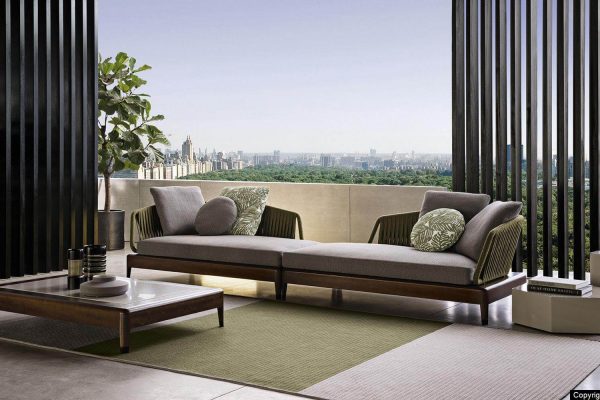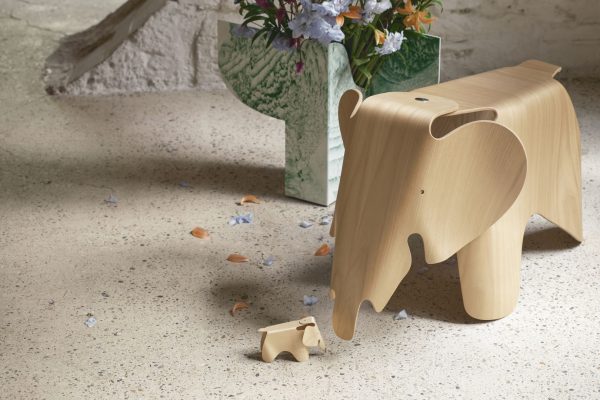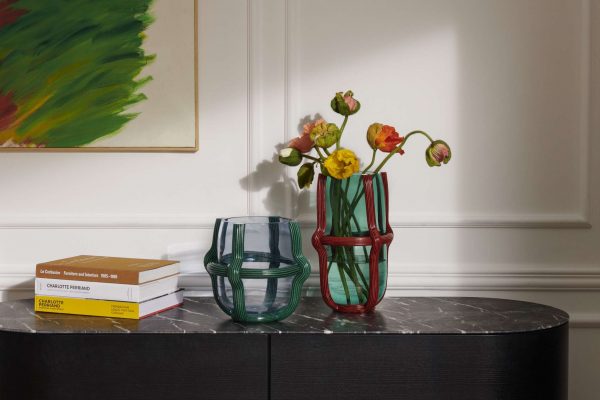Vitra: perfection is plastic
More than a substance, plastic is the very idea of its infinite transformation; it is, as its common name implies, ubiquity made visible. (Roland Barthes)
Hedonism is the philosophical view that pleasure is the highest good of man and its attainment the exclusive goal of life; in economics, it is the theory that the goal of economic activity is to achieve the maximum profit with the least possible effort. According to such assumptions, what could be more hedonistic than an object that displays a voluptuous and refined silhouette like a sculpture, while concealing a meticulously elaborate production process to minimize time and cost?
The history of the cantilever chair, or cantilever chair, begins in 1926 with Mart Stam’s experimental prototype made of gas tubes and continues in the tubular steel work of Mies van der Rohe and Marcel Breuer in the late 1920s. But it was in the 1960s that research on this type reached its peak, with Vitra’s development of the Panton Chair, the first made from a single piece of molded plastic. In 2020 Jasper Morrison repurposed the plastic cantilever chair typology for Vitra with his EVO-C.
The epic story of the Panton Chair
The Panton Chair was the first cantilever chair made entirely of plastic, in a single piece with an unforgettable sculptural form, crafted in the vibrant colors typical of the Danish designer.
The collaboration between Vitra and Verner Panton began in the 1960s precisely with the development of one of the most iconic chairs of the 20th century. This was an almost impossible challenge, as the bold lines envisioned by the designer had to be reconciled with the physical limitations of plastic technology and production requirements. The shape of the chair was dictated by the material and the decision to make it a cantilever that could be made in one piece.
In 1960 Panton had a Danish plastics company make a model of a one-piece cantilever chair, but it was not until 1963 that he met with the directors of Vitra, and it would be another four years before the first product manufactured independently by the company came to market.
After years of research, testing, discarded designs and an endless series of prototypes, the final form, made of manually laminated fiberglass-reinforced polyester, was arrived at.
For 1950s designers interested in new technologies, making a plastic chair was a common goal. As early as 1947 Mies van der Rohe had been entertaining a similar idea, and when fiberglass-reinforced polyester resin became available, Charles Eames began that series of experiments that led to his famous shell chairs.
Panton worked tirelessly with Vitra’s developers for more than two decades, sacrificing evenings and weekends, changing plastics, refining and strengthening the form in response to breakage. Initially, the chair production process was too expensive and complex, and production was slow compared to demand. After tests with Bayer’s rigid polyurethane foam proved successful, Vitra began production with an innovative molding technique in 1968. Production was finally fast but manual finishing still took a long time. The designer and the company were still not satisfied and persevered in their research, finding a new solution in a thermoplastic material developed by BASF and proceeding with injection molding, which cut finishing time. Unfortunately, the material proved to be less durable than expected, and Vitra decided to end its production until 1990, resuming production with polyurethane foam.
While the tenacious collaboration between Panton and Vitra made the Panton Chair available, its sensuous form endeared it to the public, combining the gravity-defying magic of the cantilever, and the ingenious economy of its one-piece construction with the voluptuous grace of its curves
EVO-C redefines normality
The EVO-C chair is a contemporary iteration of the classic cantilever chair, an uncompromising new interpretation of a pioneering typology. It is also a perfect example of the “super normal” philosophy of its designer, Jasper Morrison, in that it aspires to be a real, durable and enjoyable everyday object.
EVO-C is the result of manufacturing innovations that have led to gas injection molding technology to create a supporting structure of 100% recyclable polypropylene hollow tube components. These flow seamlessly into the planar surfaces of the seat and back to help provide the strength and rigidity expected of tubular steel cantilevers.
The use of a single material gives this chair a fluid silhouette, subtle enough to disappear behind anyone sitting in it, and when not in use, the chair resembles a two-legged sculpture “growing from the ground.” It is a very comfortable chair, as the ergonomic and generously curved surfaces of the seat and back give comfort to the user, and it is especially resilient, thanks to the flexibility of the backrest.



